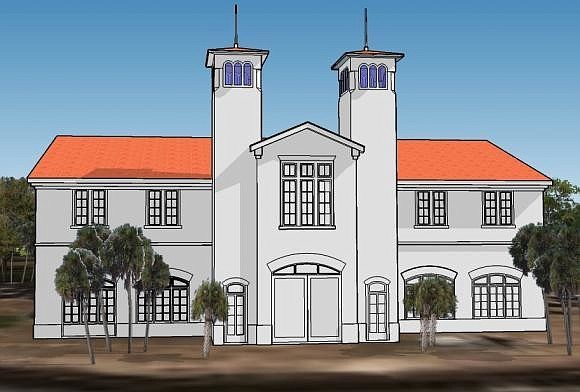- April 24, 2024
-
-
Loading

Loading

The Lift Station 87 project is undergoing yet another change — and, yet again, the new proposal has upset some residents.
This time, it’s the lowering of the building’s height that’s drawing concerns.
The wastewater facility has evolved from an underground structure to, as recently as last week, a more than 64-foot-tall building. The building first moved aboveground due to city concerns about the facility’s ability to withstand severe storms. After a series of community workshops, engineering firm McKim & Creed arrived at the taller design after accounting for maintenance needs, sound mitigation and aesthetics.
Project leaders held another meeting earlier this month to present that design to the community. Because the midpoint of the roof was 45 feet high — 10 feet taller than the maximum height allowed in the zoning code — the project would need to receive a waiver from the city to move forward.
At that meeting, the proposed design got a mixed reception. Some in attendance believed there was a way to construct a shorter structure, which they felt would be more in keeping with the rest of the neighborhood. At the Sept. 15 City Commission meeting, Vice Mayor Susan Chapman — who attended that community workshop — voiced her concerns about the proposal.
“The last building that was proposed not only has a lot of very expensive windows in it, but it also is 50 feet tall,” Chapman said. “That is way out of scale for that area.”
The Lift Station 87 project team went before the city’s Development Review Committee Sept. 17 — and the proposed design for the building had been updated to lower the height of the structure. The team had withdrawn the requested height waiver five days earlier and submitted a design within the confines of the zoning code instead.
The midpoint of the roof is now at 35 feet, though the building is still 58 feet tall at its highest point.
McKim & Creed project leader Robert Garland said the majority of the feedback the team got suggested residents were concerned about the height of the building, and so city staff decided to pull back the waiver request.
“It appeared there was more support for the lower roof profile,” Garland said. “We’re trying to include the residents and the public in our decisions the best we can.”
At the Sept. 15 commission meeting, Chapman said she was worried about resident backlash if the taller design went through. A shorter building would have broader support, she suggested.
“The previous rendition was 36 feet, and it was accepted by the neighborhoods at community meetings before,” Chapman said.
Already, however, the newest proposal has been the target of criticism. On Saturday, three residents of the Central Park II condominiums sent emails to city staff questioning the changes.
When the taller design was presented to residents, Garland explained that shorter designs required the placement of some air-conditioning units on the roof of the building, rather than storing them inside.
“It could be noisy,” Garland said about a shorter design at a community workshop earlier this month. “By using a pitched roof, we can now house all the equipment inside.”
Central Park II residents are now worried about the increased potential of noise issues affecting their condominium, which borders the site of the lift station in Luke Wood Park.
“If we are trading off height for noise, then as a resident of the nearest habitation, Central Park II, I have to object most strongly and intend raising the matter at the next commission meeting,” David Coe wrote.
Garland said McKim and Creed would work to redesign the air-conditioning system so that it could be placed inside one of two steeples located on the north side of the building.
Chapman responded to a message from Coe, stating that the decision was based on the goal of lowering the height of the structure. Donna Gannon Coe, another Central Park II resident, suggested the most recent change to the design neglected the input gathered from residents over the past several months.
“Several of us have faithfully been attending all the meetings, including the engineers’ meetings, and have agreed to the raised height,” Donna Gannon Coe wrote. “It wasn’t until the last meeting when the ruckus was raised by those who have no idea what’s been discussed all along. This is not right.”